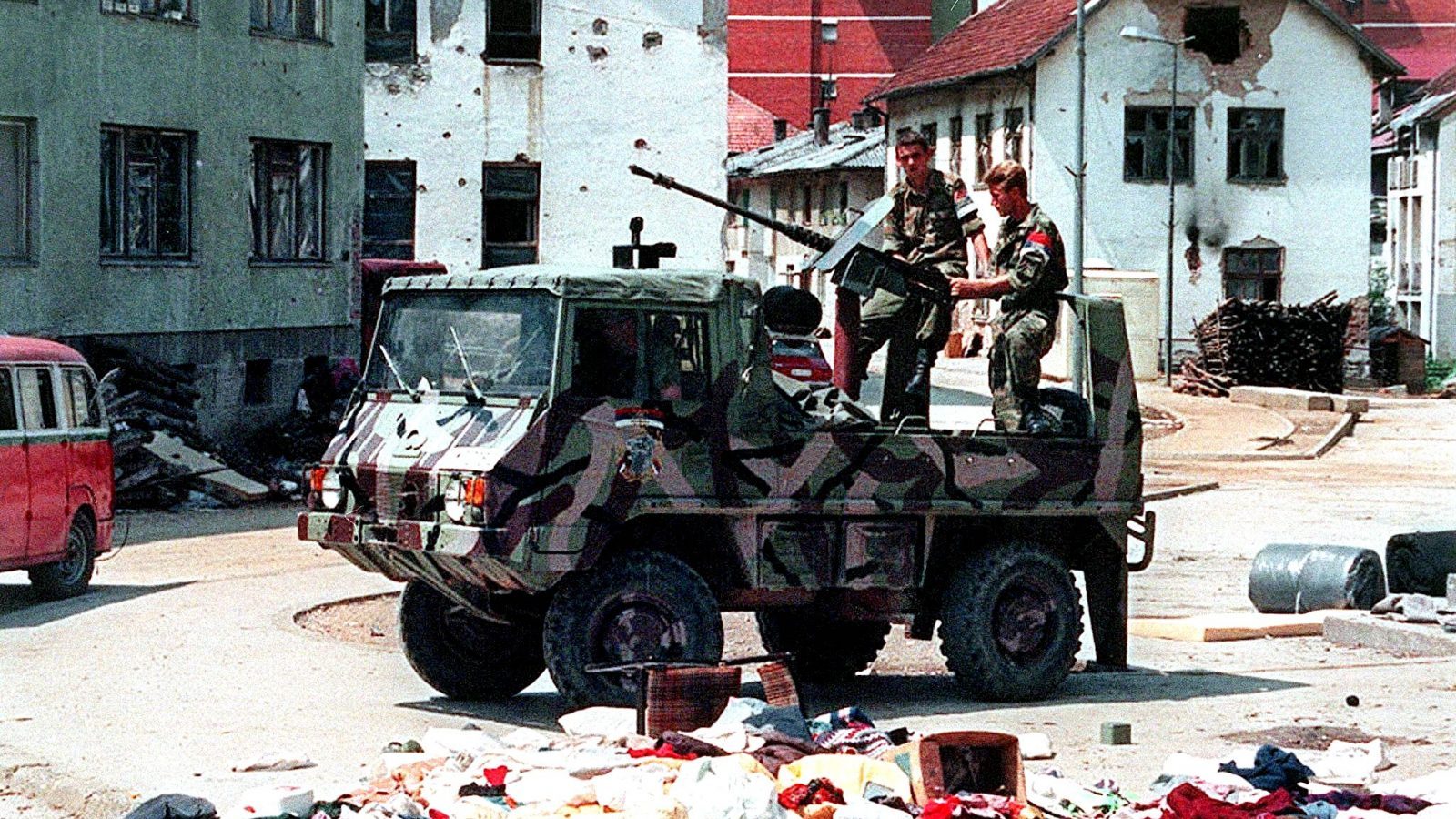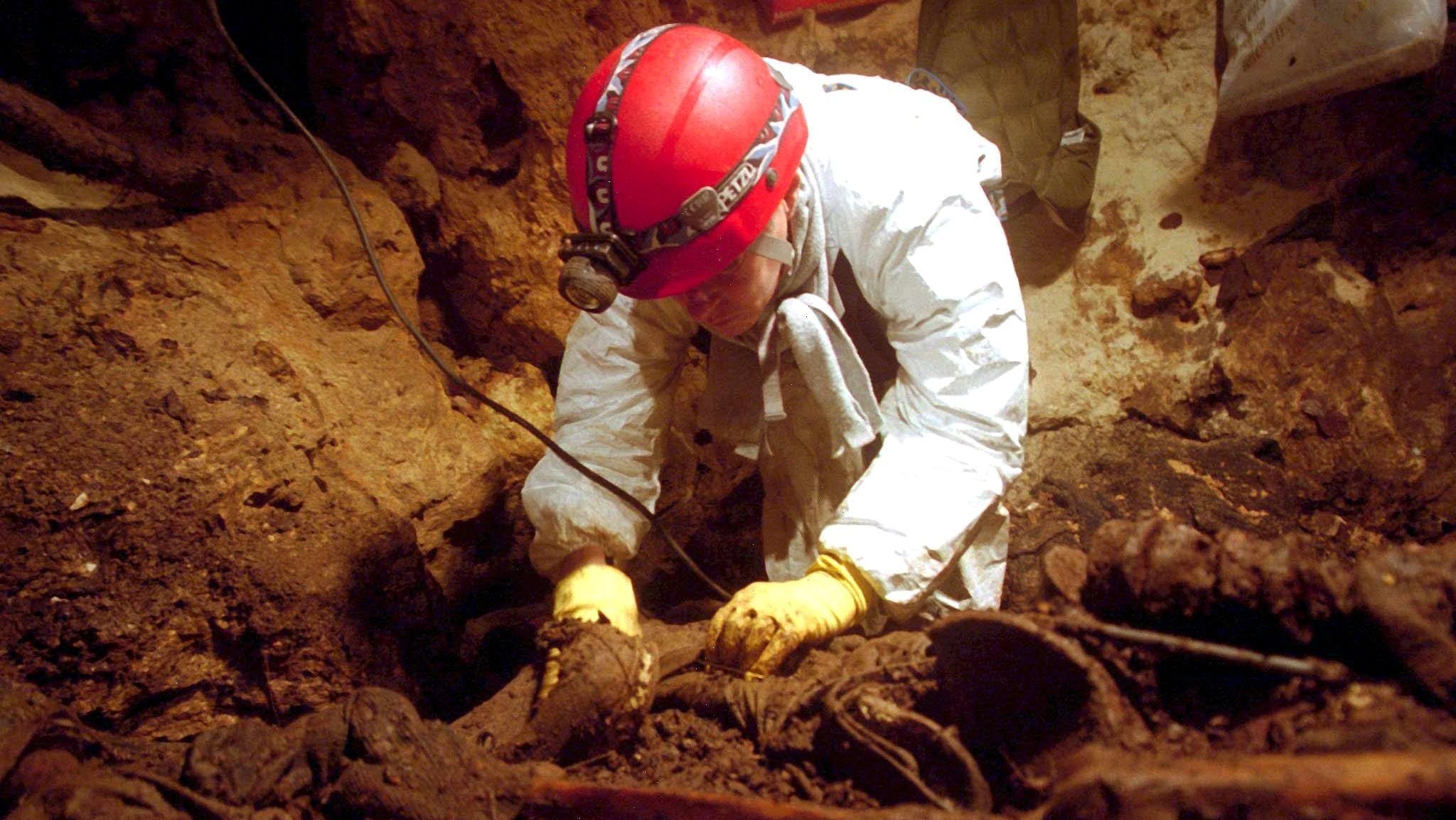This post is also available in: Bosnian
That was when Kasumovic, who lived not far from the historic 16th Century Ottoman-era bridge, decided to go back and fetch his video camera.
At that point in the war in Bosnia and Herzegovina, there were three forces fighting each other on various fronts – the Croat-led Croatian Defence Council (HVO), the Bosniak-led Bosnian Army and the Serb-led Army of Republika Srpska.
In the south of the country, Bosniaks and Croats battled for control over the city of Mostar, the largest urban area in the Herzegovina region. Located in a valley underneath the mountains and divided by the Neretva river, Mostar is connected by its bridges – the most important of which was the so-called Old Bridge, built between 1557 and 1566, a pinnacle achievement of Ottoman architecture at the time.
Its construction was ordered by the Ottoman Sultan Suleiman the Magnificent and it was the biggest arch construction in the world at the time. It stood proudly for hundreds of years, until that day in November.
According to records held by the International Criminal Tribunal for the Former Yugoslavia, the HVO fired around 50 projectiles at Mostar’s old town on November 8, 1993 from a tank located in the hills south of the centre.
“We did not have basements in the old town, so people had to find ways to protect themselves during the attacks,” Kasumovic said.
“I had a concrete pit in my garage, so my family was hiding there, while I went to record how they were firing shells at the bridge,” he added.
Kasumovic, who was not a professional camera operator, kept recording all day on November 8, until the late afternoon, unaware that he would document a crucial moment in the history of his town.
In November, night falls quite early in Bosnia and Herzegovina, around 5pm. For Kasumovic, the fall of darkness meant that the Old Bridge would survive another night. On November 9, it would not be so lucky.
‘We will build a newer Old Bridge’
Video courtesy of Nedzad Kasumovic.
On November 9, the HVO tank started firing at Mostar’s old town again, targeting the Old Bridge, which had already been damaged by artillery fire the previous day.
“That day , only six shells hit the bridge. It fell on the sixth one, at 10.16am,” Bosnian Army officer Miro Salcin later told the trial of six wartime Bosnian Croat political and military officials in The Hague.
Kasumovic, who captured the moment with his video camera, said that watching the bridge collapse felt unreal.
“I knew I was recording, but I was really hoping that I was dreaming. The disbelief in what my eyes were seeing was something I can’t describe,” he said.
According to the witnesses in the trial in The Hague, dozens of people gathered on both banks of the Neretva river, staring in disbelief because the symbol of their city was no longer standing.
“For two days people felt sick about what happened, and we were trying to calm everyone down,” Salcin told the court.
Bozidar Vucurevic, a wartime political leader in the town of Trebinje, told the Hague Tribunal that a Croat politician had jokingly downplayed the destruction, saying: “We destroyed the bridge, but we will build them an even newer Old Bridge.”
The HVO claimed the bridge was a legitimate military target because allowed Bosniak troops to cross to the other bank of the Neretva, as two other nearby bridges had been destroyed in 1992 by Bosnian Serb forces.
The International Criminal Tribunal for the Former Yugoslavia found that its destruction served a legitimate military purpose, and therefore “cannot be considered, in and of itself, as wanton destruction not justified by military necessity”.
HVO commander Slobodan Praljak, who killed himself by taking poison during the reading of his verdict in The Hague, denied until the last that he knew who destroyed the bridge.
A turning point in the conflict
 Troops from NATO’s SFOR force begin to retrieve parts of the Old Bridge from the Neretva river in September 1997. Photo: EPA/Fehim Demir.
Troops from NATO’s SFOR force begin to retrieve parts of the Old Bridge from the Neretva river in September 1997. Photo: EPA/Fehim Demir.
Kasumovic’s footage of the Old Bridge’s demise was seen around the world, thanks to journalist Sanel Kajan, who transferred the footage to the broadcast-quality Betamax format and sent it to Bosnian capital Sarajevo on horseback – the easiest and quickest way over the mountains in the absence of other transportation during wartime.
For Kasumovic, as for many historians, the destruction of the Old Bridge was a turning point in the Bosnian war because of the shock caused by the destruction of such a significant historical structure.
Soon afterwards, the HVO and the Bosnian Army decided to join forces and combine their efforts into fighting the Bosnian Serb military, which at the time was making significant progress on several fronts.
An improvised construction was then built to connect the two towers on the opposite banks of the Neretva previously spanned by the Old Bridge.
The reconstruction of the Old Bridge started in 1997, when the original parts of the structure were retrieved from the river. It was rebuilt at a cost of around 12 million euros and reopened in July 2004. It is now listed as a UNESCO World Heritage Site.
Thirty years later, Mostar remains a de facto divided city, with Bosniaks and Croats coexisting rather than living together.
The Old Bridge stands proudly again, but now as a symbol of a city that never managed to rebuild its pre-war spirit.
It is Mostar’s main tourist attraction, attracting some 100,000 sightseers each year. Tourists watch in fascination as courageous local divers leap from the bridge into the cold and unpredictable Neretva river.
The Divers Club Mostar also organises the annual commemoration of the destruction of the bridge. Flowers are thrown into the river and a diver’s makes a symbolic plunge into the water, followed by a moment of silence.
But Kasumovic, who now runs a highly-rated bed-and-breakfast in Mostar, argues that there should be a more substantial commemoration of the bridge’s destruction.
So far, the Mostar city administration hasn’t been involved in the commemoration or sent a representative to participate in the event. Local Croat leaders also do not attend as they do not see the bridge as a symbol of their community.
“It’s shameful that the commemorations are so short, that no Croats are attending, and that everything is kept so modest,” Kasumovic said.
Mostar Suffers Amid Twists and Turns of War
The 1992-95 war left Mostar the worst-damaged city in the country. In the early days of the war, from April 1992, the Bosnian Serbs attacked city first. Croats and Bosniaks joined forces and responded, forcing the Serbs to direct their troops to other fronts.
In September 1992, the Croat-led HVO started its attack on the eastern part of the city, populated mostly by Bosniaks. Several prison camps were set up where Bosniak men and boys were held.
Some 100,000 shells were fired at the city until March 1994, when the so-called Washington Treaty was signed and a truce was made between the HVO and the Bosnian Army, uniting them in the fight against Bosnian Serb forces.


